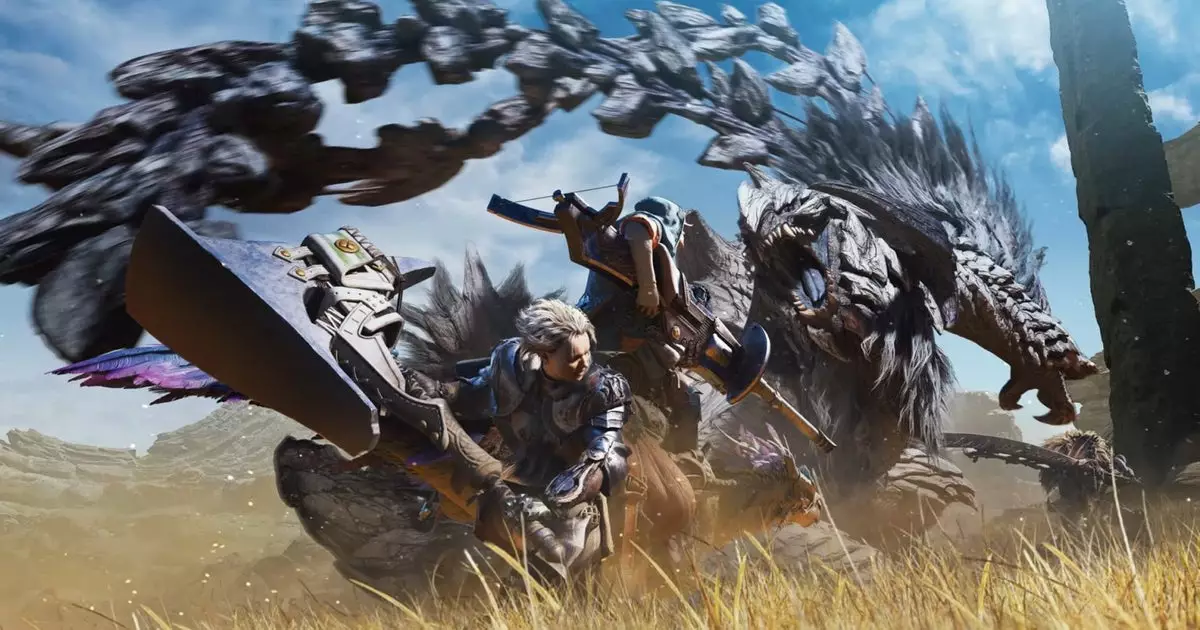In the realm of action role-playing games, few franchises command as much loyalty and attention as Capcom’s Monster Hunter series. With the latest iteration, Monster Hunter Wilds, the developers have infused the game with a plethora of new monsters, including wyverns and arachnids, enhancing the tactical depth of gameplay. However, despite these additions, the core weapon types remain strikingly similar to those found in earlier versions, particularly Monster Hunter Freedom 2 released back in 2007. New visuals and polished move sets do little to mask the underlying similarities, creating an experience that, while visually refreshing, still feels rooted in nostalgia rather than novelty.
Yuya Tokuda, the director behind Wilds, has provided insights into the strategic choices made during the game’s development. Rather than introducing a new weapon class, which could complicate balance and gameplay dynamics, the team has opted to focus on refining and improving existing weapon types. This decision reflects a cautious, considered approach, prioritizing depth over breadth. Tokuda’s remarks suggest a clear intention: enhancing the player’s experience with current mechanisms rather than scattering developer resources on expansive additions that may disrupt the harmony of the gameplay.
Each weapon type in Wilds—14 in total—has been meticulously fine-tuned to offer increased viability and a more engaging gameplay experience. The balance between various weapon types not only provides a diverse toolkit for players but also fosters a sense of interconnectedness among different styles of play. The Greatsword may remain the reliable choice for many, yet weapons like the Hunting Horn take on new life, enabling players to experiment with strategies in ways that feel both fresh and authentic.
According to Tokuda, the challenge of introducing a new weapon type lies in ensuring it complements the existing lineup without introducing overlaps. This delicate balancing act requires immense creativity and consideration. Each weapon in the Monster Hunter arsenal draws inspiration from the fictional creatures within the game, leading to an inherent limitation in terms of originality. Crafting an entirely novel weapon that feels legitimate and effective against the vast and menacing ecosystem of Wilds is undeniably a tall order.
The balance seeks to provide a comprehensive experience that rewards players for mastering their chosen weapon while simultaneously challenging them to adapt to the strengths and weaknesses of their foes. This nuanced approach means that, rather than simply slapping together a bunch of weapon types and calling it a day, the developers are committed to bringing meaningful changes to the existing systems—a focus that reflects their dedication to player satisfaction.
Taking into account the expansion of Monster Hunter: World’s Iceborne, which catered specifically to experienced players, Capcom faced unique design hurdles in structuring Wilds. Aimed at a broader audience, the game exists in a space where not every player possesses the same skill set. Consequently, the challenge arises in making the experience accessible yet engaging for both novices and seasoned veterans alike. Tokuda’s statement regarding the assumption of mastery among Iceborne players highlights an awareness of diverse player capabilities—a consideration less common in the gaming industry where sequels often cater exclusively to existing fan bases.
As players delve into the intricate ecosystem of Monster Hunter Wilds, one can only wonder how Capcom might reimagine weapon designs in future installments. Perhaps there lies potential in allowing the creative minds behind monster design to collaborate closely with weapon developers, leading to an inventive fusion of aesthetic and functional artistry. While the simple notion of crafting a weapon from a creature made of balloons might elicit chuckles, it introduces a radical deviation from the traditional. Surely, innovations that would challenge the blacksmiths and push the boundaries of weaponization could pave the way for an evolution in Monster Hunter combat.
Monster Hunter Wilds emerges as a polished and rebalanced experience, where the true ambition isn’t to add new weapons extensively but to refine and enrich the arsenal already in place. The series continues to thrive on its roots while navigating the complexities of innovation and player expectations. As the franchise evolves, it remains crucial for developers to tread carefully, fostering an environment where every weapon feels unique while offering new avenues for exploration within the expansive world of monster hunting.

